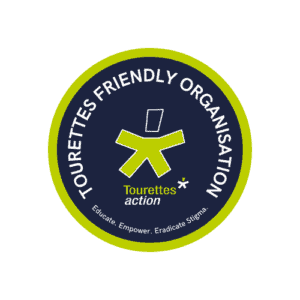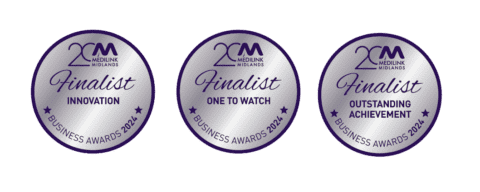An important focus of our research over the last few years has been to understand how the brain networks that give rise to tics could be effectively modified or controlled using non-invasive forms of brain stimulation so as to bring about a reduction in tics.
Our research on Tourette syndrome dates from 2005, when Georgina Jackson and colleagues began investigating mechanisms of cognitive control (over tics) (e.g., Mueller et al., 2006), and shortly thereafter Stephen Jackson began using multi-modal brain imaging and brain stimulation techniques to investigate brain network function in Tourette syndrome, including neuroplastic alterations in brain structure, function, and chemistry that might be responsible for the remission of tics in Tourette syndrome (e.g., Jackson et al., 2011; Draper et al., 2014; Draper et al., 2015; Draper et al., 2016).
Early on in our studies of Tourette syndrome we began a very useful collaboration with the UK charity Tourettes Action, and in 2009 Georgina Jackson was commissioned by Tourettes Action to examine the psycho-social experiences of young people with Tourette syndrome. During this study it became apparent that there is a considerable unmet need for effective therapies for Tourette syndrome, and in particular for safe and effective non-drug therapies that can be used by the individual outside of the clinic (i.e., in their home or in a school environment). This led us to begin a programme of studies that investigated how non-invasive brain stimulation techniques might be used to modulate brain network function, and whether this approach could be used to bring about therapeutic benefits in Tourette syndrome (e.g., remission of tics and co-occurring clinical phenomena).
One promising line of research focused on using non-invasive brain stimulation to modulate brain network function in Tourette syndrome through the mechanism of ‘entrainment’. As noted above, brain network function is associated with intrinsic oscillatory activity within the brain (brain rhythms) and many brain health conditions have been associated with alterations in brain oscillatory activity. Non-invasive brain stimulation techniques can be used to entrain oscillatory activity over targeted brain areas, and we hypothesised that ‘entraining’ those brain oscillations linked with movement suppression could be used to effectively reduce the occurrence of tics in Tourette syndrome.
However, brain stimulation techniques such as transcranial magnetic stimulation are not suitable for use outside of the clinic or for use with very young children, so we investigated alternative mechanisms for entraining brain network function using rhythmic peripheral nerve stimulation. This line of research, funded by the University of Nottingham, Tourettes Action, and the NIHR Nottingham Biomedical Research Centre, led to the development of the therapeutic approach described in our recent papers (Houlgreave et al., 2020; Morera-Maiquez et al., 2020) which forms the basis for the approach taken by Neurotherapeutics Ltd.
Building on the previous research and collaborations, we embarked on a pivotal clinical trial to evaluate the effectiveness of this novel approach, for alleviating the symptoms of Tourette syndrome. This UK-wide double-blind sham-controlled trial demonstrated encouraging results in a home-based study. Participants receiving active stimulation reported a substantial reduction in the severity and frequency of their tics (Maiquez, B. M. et al., 2023).
This trial marks a significant step towards developing a safe, effective, non-drug treatment for Tourette syndrome that individuals could administer independently outside clinical settings.
At Neupulse, we are not just developing a medical device; we are pioneering a change in the Tourette syndrome therapeutic landscape. Our commercial strategy is focused on bringing this ground-breaking technology from the realm of clinical trials into the hands of those who need it most.
Sven C. Mueller, Georgina M. Jackson, Ranu Dhalla, Sophia Datsopoulos, Chris P. Hollis (2006). Enhanced Cognitive Control in Young People with Tourette syndrome. Current Biology 16, 570–573.
Jackson S.R, Parkinson A, Jung J, Ryan S.E, Morgan P.S, Hollis C, Jackson G.M. (2011). Compensatory neural reorganization in Tourette syndrome, Current Biology 21:580-58.
Draper, A., Stephenson, M.C., Jackson, G.M., Pepes, P., Morgan, P.S., Morris, P.G., Jackson, S.R. (2014). Increased GABA contributes to enhanced control over motor excitability in Tourette syndrome. Current Biology 24(19): 2343-7.
Draper, A, Jude, L, Jackson, G.M., Jackson, S.R., (2015). Motor excitability during movement preparation in Tourette syndrome. Journal of Neuropsychology. 9, 33-44.
Draper, A., Jackson, G.M., Morgan, P.S., Jackson, S.R., Premonitory urges are associated with decreased grey matter thickness within the insula and sensorimotor cortex in young people with Tourette syndrome (2016) Journal of Neuropsychology 10 (1), 143-153.
Mairi S. Houlgreave, Barbara Morera Maiquez, Matthew J. Brookes, Stephen R. Jackson (2020). The Oscillatory Effects of Rhythmic Median Nerve Stimulation. doi: https://doi.org/10.1101/2020.10.23.348268
Morera Maiquez, B., Sigurdsson, H. P., Dyke, K., Clarke, E., McGrath, P., Pasche, M., . . . Jackson, S. R. (2020). Entraining Movement-Related Brain Oscillations to Suppress Tics in Tourette syndrome. Current Biology, 30(12), 2334-2342.
Company number: 13198315
Registered Office:
The Ingenuity Centre
University Of Nottingham Innovation Park
Triumph Road
Nottingham
England
NG7 2TU
Neupulse and Neutrack are registered trade marks of Neurotherapeutics Ltd

